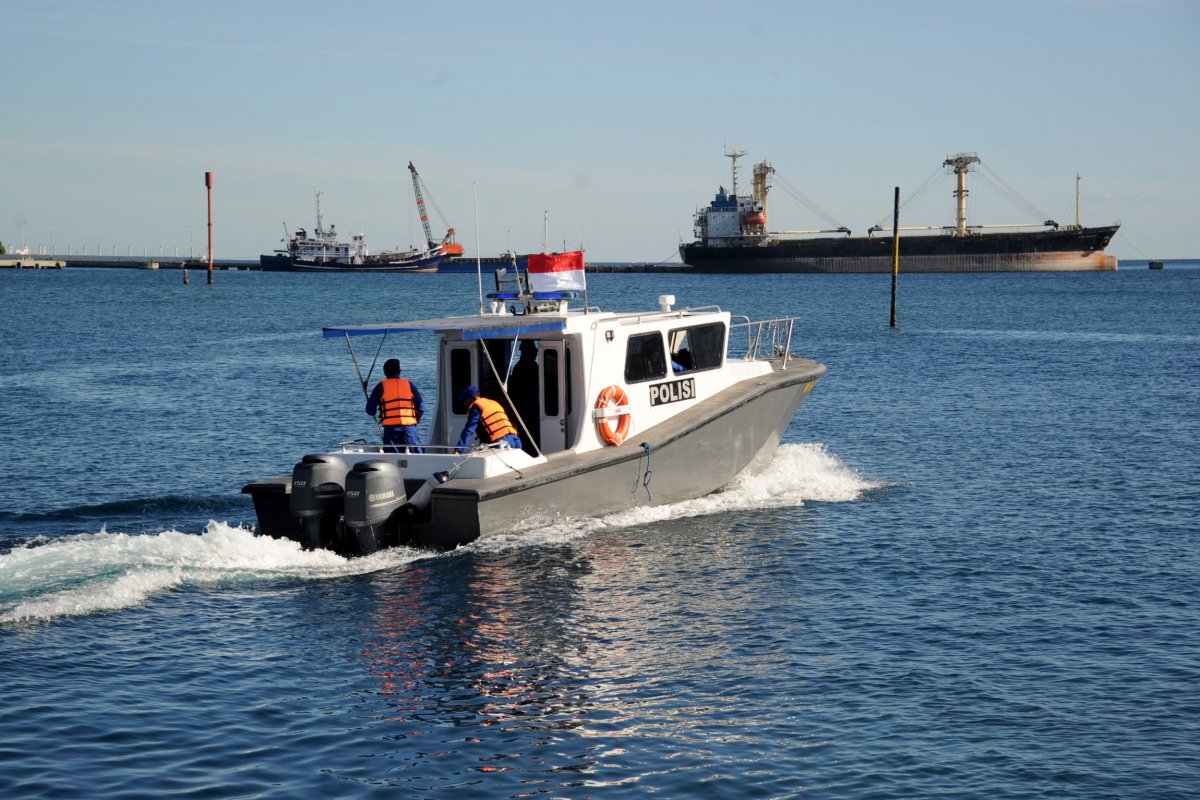The search for a missing Indonesian submarine has grown more frantic as the navy scoured the waters off Bali on Friday with the help of a sonar-equipped Australian warship with a helicopter, the Associated Press reported.
The KRI Nanggala 402 and its 53 crew members went missing after its last reported dive Wednesday off the resort island. Concern is mounting as officials fear the vessel might have sunk too deep to reach or recover in time. The navy chief said the submarine was expected to run out of oxygen early Saturday morning.
"We will maximize the effort today, until the time limit tomorrow at 3 a.m.," military spokesperson Major General Achmad Riad told reporters.
The navy said it believes that the submarine sank to a depth of 600 to 700 meters (2,000 to 2,300 feet), much deeper than its collapse depth, at which water pressure would be greater than the hull could withstand. The vessel's collapse depth was estimated at 200 meters (655 feet) by a South Korean company that refitted the vessel in from 2009 to 2012.
The cause of the disappearance is still uncertain. The navy said an electrical failure could have left the submarine unable to execute emergency procedures to resurface.
For more reporting from the Associated Press, see below.

There have been no signs of life from the submarine, but family members held out hope that the massive search effort would find the vessel in time.
"The family is in a good condition and keeps praying," said Ratih Wardhani, the sister of 49-year-old crewman Wisnu Subiyantoro. "We are optimistic that the Nanggala can be rescued with all the crew."
Twenty-four Indonesian ships and a patrol plane were mobilized for the search Friday, focusing on the area where an oil slick was found after the submarine disappeared during an exercise. Rescuers made similar massive searches in the previous two days.
An American reconnaissance plane was expected to join the search Saturday and a second Australian ship was due soon.
"These two Australian ships will help expand the search area and extend the duration of the search effort," Australian Navy Rear Admiral Mark Hammond said.
Singaporean and Malaysian rescue ships were also expected in the coming days.
Indonesian President Joko Widodo canceled a visit to Banyuwangi port, where some rescue ships left earlier, to prepare for a weekend regional summit in Jakarta, officials said. He asked Indonesians to pray for the crew's safe return, while ordering all-out efforts to locate the submarine.
"Our main priority is the safety of the 53 crew members," Widodo said in a televised address on Thursday. "To the family of the crew members, I can understand your feelings and we are doing our best to save all crew members on board."
There's been no conclusive evidence the oil slick was from the sub. Navy Chief of Staff Admiral Yudo Margono said oil could have spilled from a crack in the submarine's fuel tank or the crew could have released fuel and fluids to reduce the vessel's weight so it could surface.
Margono said an unidentified object exhibiting high magnetism was located at a depth of 50 to 100 meters (165 to 330 feet) and officials held out hope it is the submarine.
Submarine accidents are often disastrous.
In 2000, the Russian nuclear submarine Kursk suffered internal explosions and sank during maneuvers in the Barents Sea. Most of its 118 crew died instantly, but 23 men fled to a rear compartment before they later died, mainly of suffocation. In November 2017, an Argentine submarine went missing with 44 crew members in the South Atlantic, almost a year before its wreckage was found at a depth of 800 meters (2,625 feet).
But in 2005, seven men aboard a Russian mini-sub were rescued nearly three days after their vessel was snagged by fishing nets and cables in the Pacific Ocean. They had only six hours of oxygen left before reaching the surface.
The German-built diesel-powered KRI Nanggala 402 has been in service in Indonesia since 1981 and was carrying 49 crew members and three gunners as well as its commander, the Indonesian Defense Ministry said.
Indonesia, the world's largest archipelago nation with more than 17,000 islands, has faced growing challenges to its maritime claims in recent years, including numerous incidents involving Chinese vessels near the Natuna islands.
Uncommon Knowledge
Newsweek is committed to challenging conventional wisdom and finding connections in the search for common ground.
Newsweek is committed to challenging conventional wisdom and finding connections in the search for common ground.
About the writer
Lauren Giella is a Newsweek National reporter based in New York. Her focus is reporting on breaking and trending U.S. ... Read more
To read how Newsweek uses AI as a newsroom tool, Click here.








